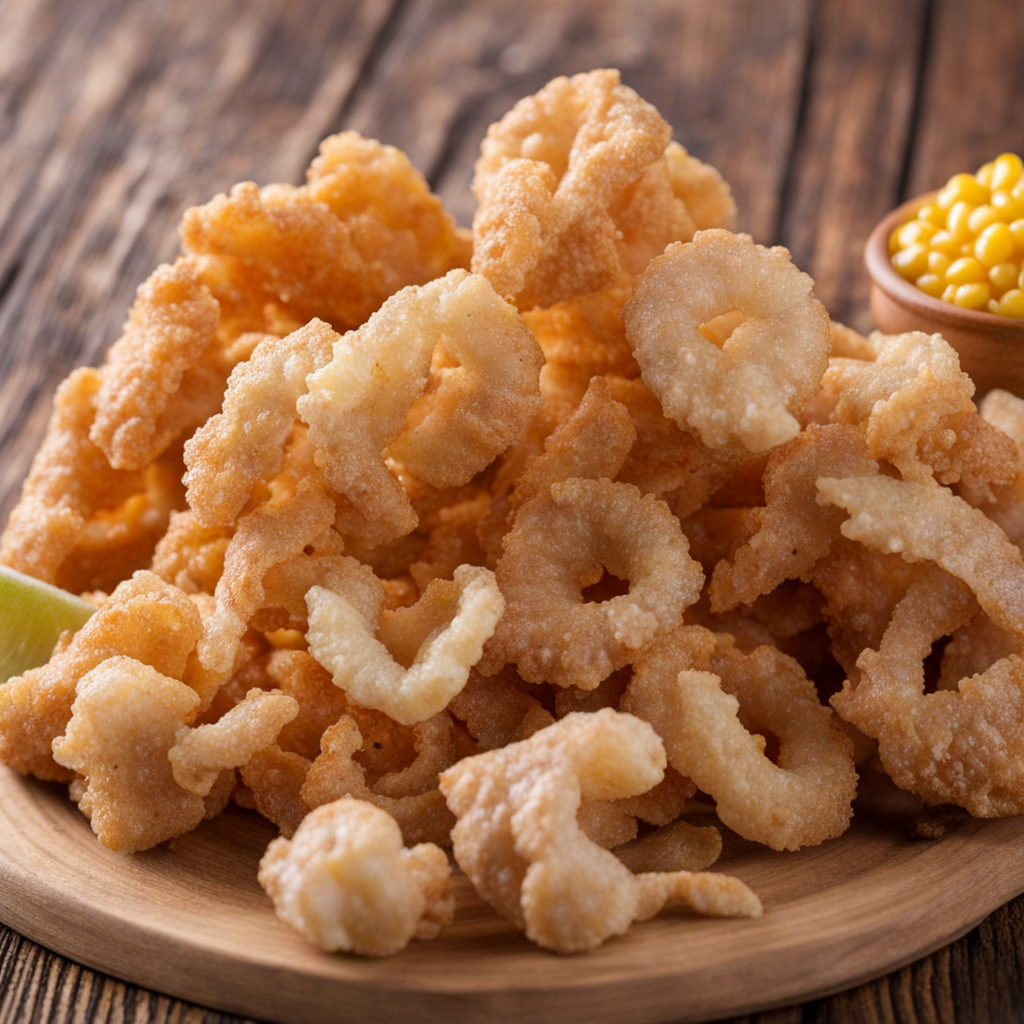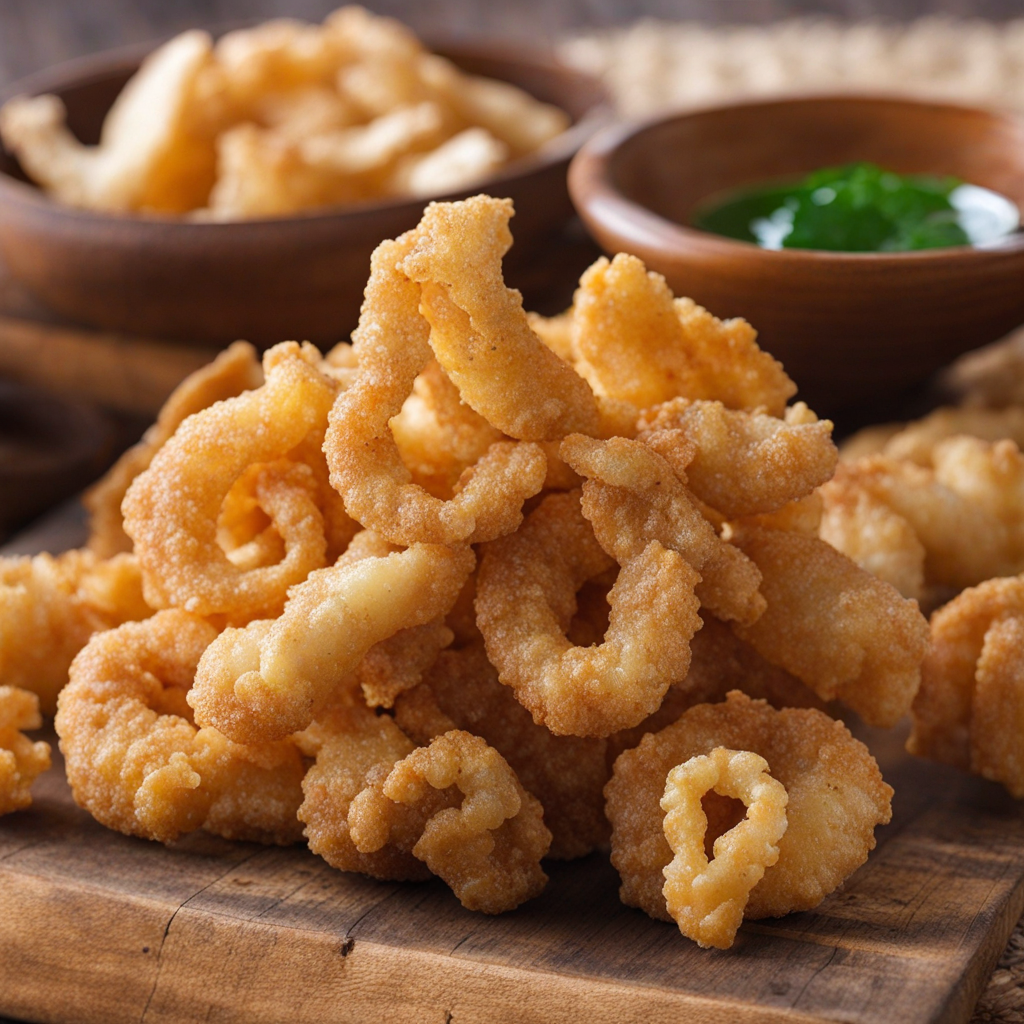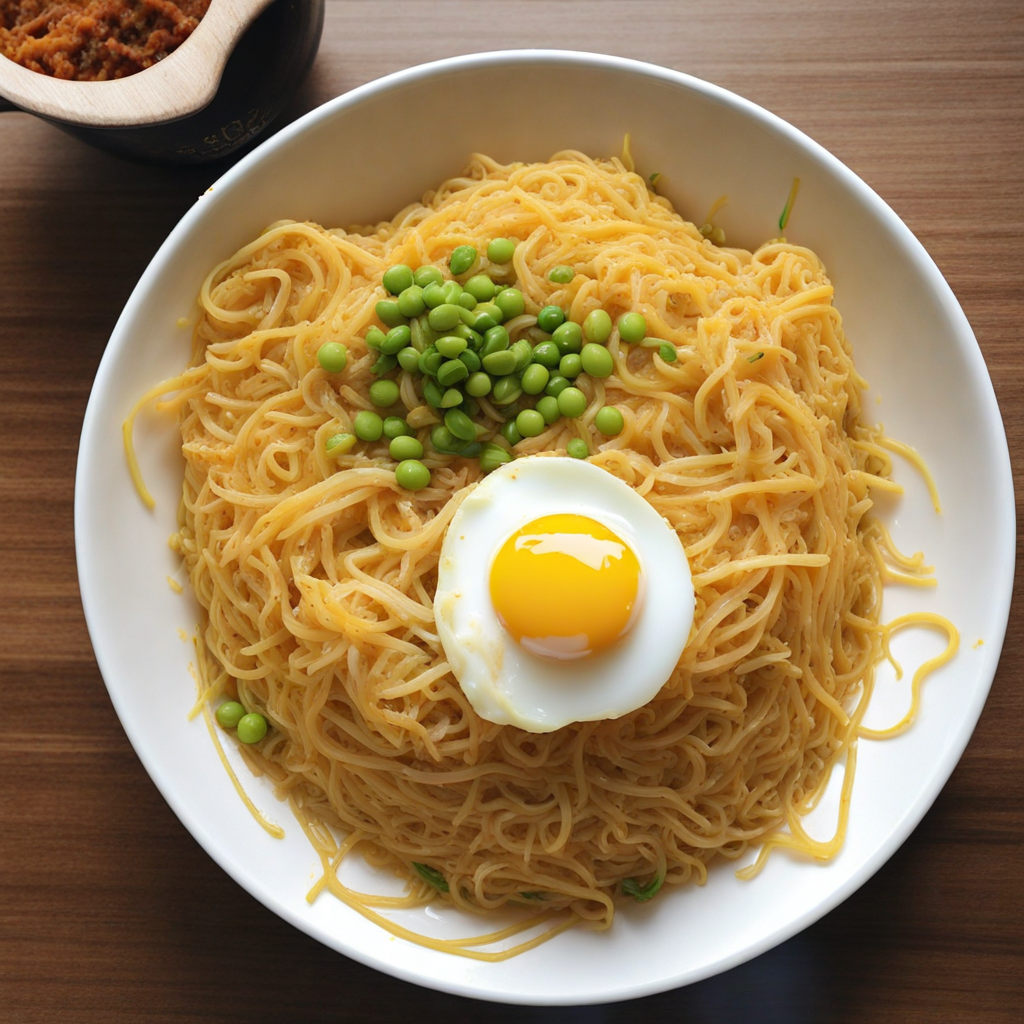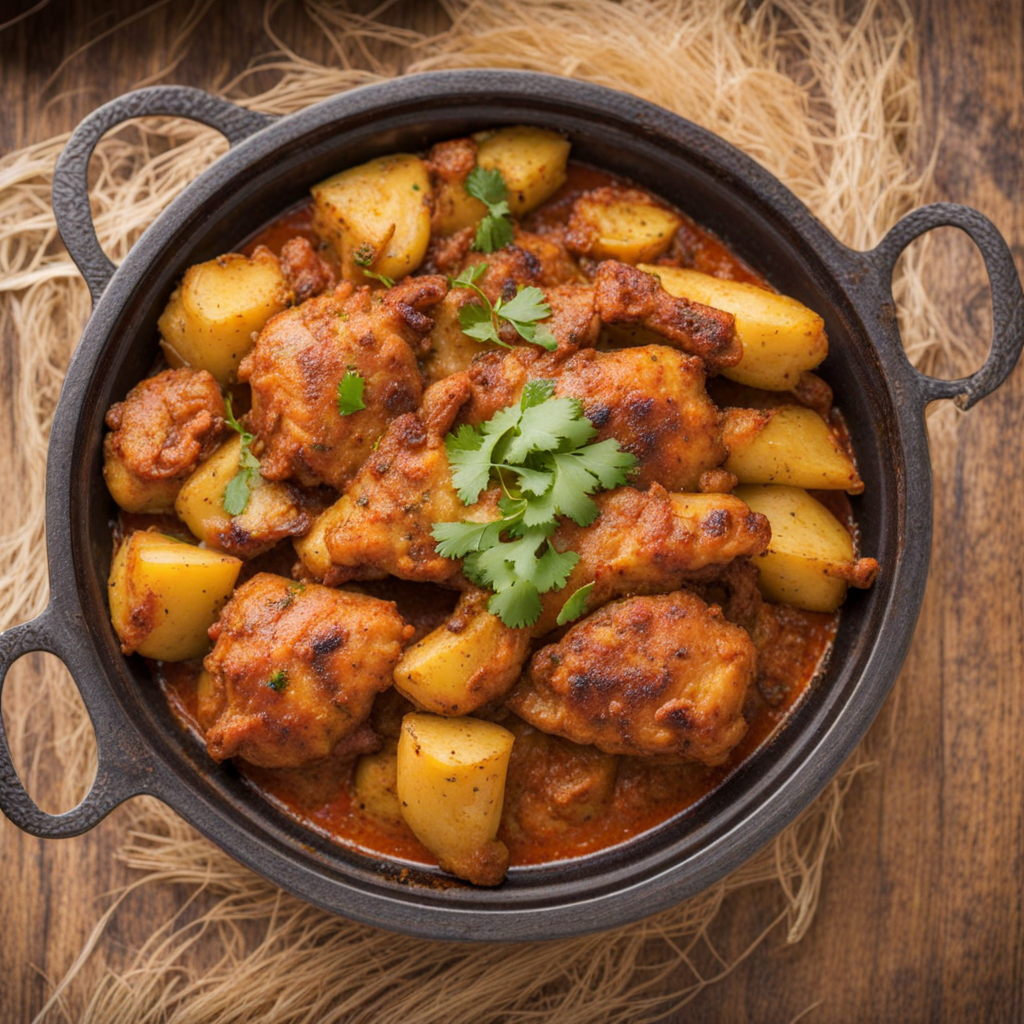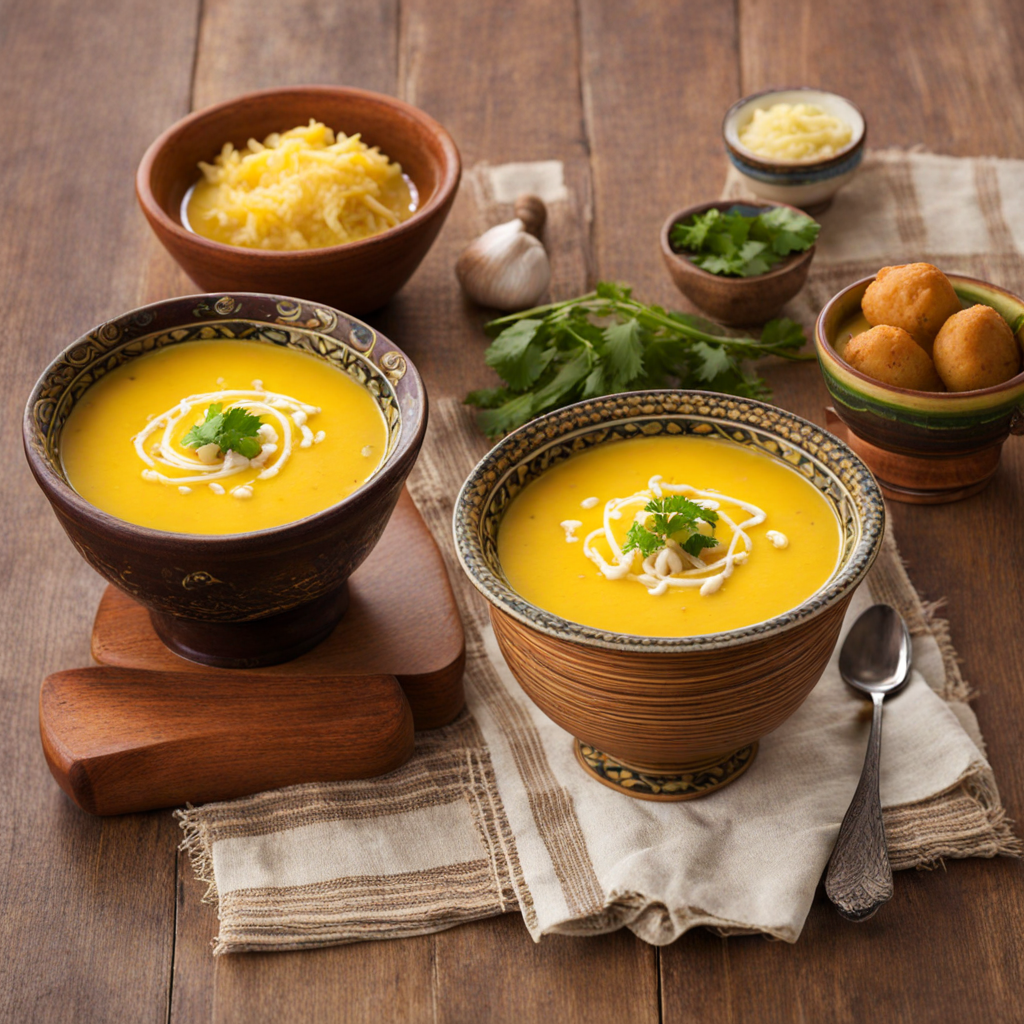Chicharrón
Chicharrón is a beloved Bolivian dish that showcases the country's rich culinary traditions. At its core, Chicharrón consists of fried pork belly or pork rinds, which are seasoned to perfection and deep-fried until they achieve a crispy, golden-brown exterior. The dish is often accompanied by a vibrant array of salsas and condiments, including llajwa, a zesty sauce made from tomatoes, peppers, and herbs, that adds a delightful kick and balances the richness of the meat. The crunchy texture of the Chicharrón pairs beautifully with the smoothness of traditional Bolivian sides like chuño, a freeze-dried potato, or rice, making it a satisfying and fulfilling meal. What sets Bolivian Chicharrón apart is the way it reflects the diverse flavors of the region. The pork is typically marinated with a blend of spices, including garlic, cumin, and paprika, which infuse the meat with a robust flavor profile. As it cooks, the fat renders down, contributing to the dish's signature crunch while the meat remains juicy and tender. Each bite delivers a satisfying contrast of textures and tastes, making it a favorite among locals and visitors alike. Chicharrón is not just a dish; it's an experience deeply rooted in Bolivian culture. Often served during festive occasions or family gatherings, it brings people together around the table, fostering a sense of community and celebration. Whether enjoyed as a main course or as a snack, Chicharrón embodies the heart of Bolivian cuisine, inviting those who try it to explore the rich flavors and heritage of this vibrant South American country.
How It Became This Dish
The History of Chicharrón in Bolivia Chicharrón, a beloved dish in various Latin American countries, holds a particularly significant place in Bolivian cuisine. While variations of this crispy pork treat exist across the continent, the Bolivian interpretation is unique and deeply embedded in the country’s cultural fabric. This exploration of chicharrón in Bolivia will cover its origins, cultural significance, and how it has evolved over time. #### Origins The roots of chicharrón can be traced back to ancient cooking practices among the indigenous peoples of the Andes. Before the arrival of the Spanish in the 16th century, these communities relied heavily on the local fauna and flora, incorporating a variety of meats into their diets. Pigs were introduced to South America by the Spaniards, and they quickly adapted to the Andean environment, becoming a staple livestock animal. The method of cooking pork, particularly by frying it until it reaches a crispy texture, is likely influenced by both indigenous techniques and Spanish culinary practices. The name "chicharrón" itself is derived from the Spanish word "chicharrón," which refers to fried pork skins, but it has evolved in Bolivia to denote not just crispy pork rinds but also various cuts of pork prepared in a similar manner. #### Cultural Significance In Bolivia, chicharrón is more than just a dish; it is a symbol of community, celebration, and identity. Traditionally served during festivals, family gatherings, and special occasions, it is often accompanied by side dishes such as llajwa (a spicy salsa made from tomatoes and peppers), boiled potatoes, and corn. The preparation and sharing of chicharrón during these events foster a sense of unity and belonging among families and friends. The dish is particularly significant in the traditional culinary practices of the Aymara and Quechua peoples, who have incorporated it into their festivals and rituals. For example, during the Aymara New Year, known as "Willka Kuti," families prepare chicharrón as part of the celebration, signifying abundance and prosperity for the coming year. The dish is not only a culinary delight but also a cultural artifact, reflecting the rich history and traditions of the Andean people. #### Development Over Time As Bolivia's culinary landscape has evolved, so too has the preparation and presentation of chicharrón. Traditionally, the dish was made using whole pieces of pork, which were marinated and then fried in their own fat or lard. This method produced a rich, flavorful meat with a crunchy exterior. However, with the modernization of cooking practices and the influence of urbanization, chicharrón has seen various adaptations. In urban centers like La Paz and Santa Cruz, chicharrón is often prepared in restaurants and street stalls, catering to a diverse clientele. Chefs have started experimenting with different cuts of meat, including pork belly, shoulder, and even chicken, to create variations on the classic dish. This evolution has led to the emergence of new flavors and presentations, such as chicharrón served on a bed of fried rice or alongside fresh salads. Moreover, chicharrón has also gained international recognition, finding its way onto menus in gourmet restaurants outside of Bolivia. Chefs around the world have embraced the dish, incorporating it into fusion cuisine and elevating its status as a global delicacy. This internationalization has sparked a renewed interest in traditional Bolivian cooking methods, prompting younger generations to explore their culinary heritage. #### Chicharrón Today Today, chicharrón remains an integral part of Bolivia's culinary identity. It is a dish that transcends social classes, enjoyed by both the wealthy and the working class. Street vendors sell it for a few bolivianos, while upscale restaurants may offer gourmet versions at higher prices. This accessibility has helped solidify chicharrón as a national dish and a point of pride for Bolivians. In recent years, there has also been a growing movement to promote traditional Bolivian foods, including chicharrón, as part of the country's cultural heritage. Food festivals, culinary competitions, and educational programs are increasingly highlighting the importance of traditional dishes in the context of Bolivia's diverse cultural landscape. These initiatives not only celebrate chicharrón but also encourage the preservation of indigenous cooking techniques and ingredients. #### Conclusion Chicharrón is more than just a crispy, savory dish; it is a testament to Bolivia's rich cultural history and culinary evolution. From its indigenous roots to its contemporary interpretations, chicharrón serves as a reminder of the fusion of traditions that characterize Bolivian cuisine. As the world continues to discover and appreciate this delightful dish, it stands as a symbol of community, celebration, and the enduring ties to heritage that define the Bolivian identity. Whether enjoyed at a bustling street fair or a family gathering, chicharrón remains a cherished staple, inviting people to savor not only its flavors but also the stories and traditions that accompany it.
You may like
Discover local flavors from Bolivia


